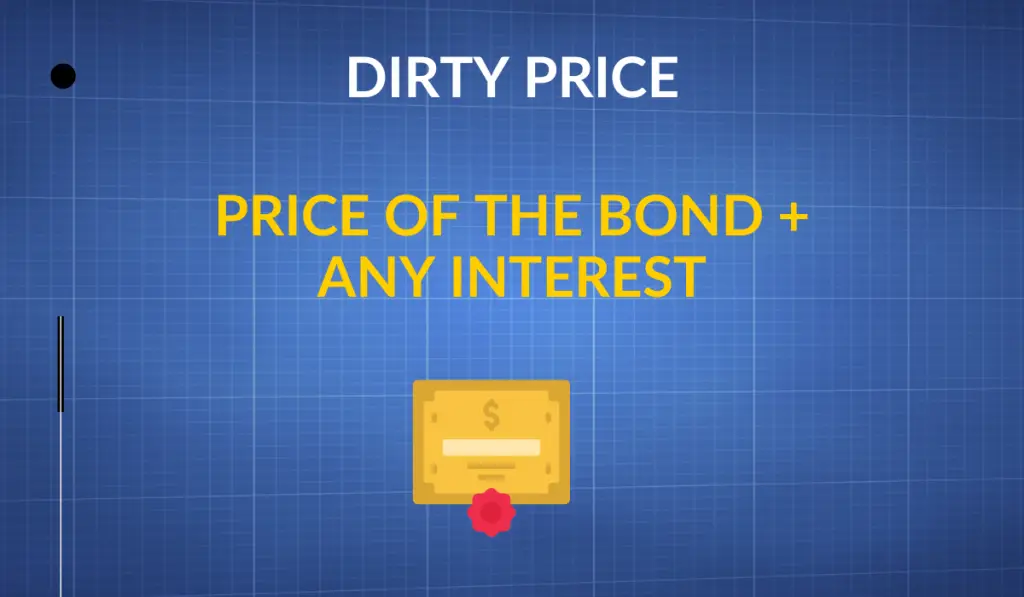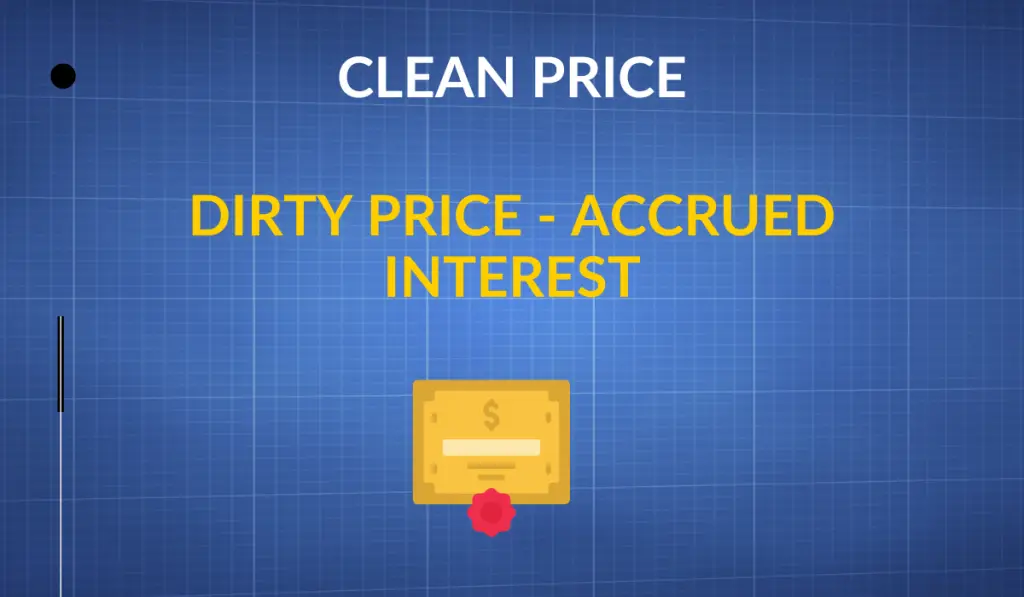Although bonds are pretty boring, they are an extremely important part of the financial system. In this article, we will discuss how to calculate the clean and dirty price of a bond and why they are important.
Summary
- The dirty price of a bond is the price including any interest accrued since the issue of the most recent coupon payment.
- The clean price of a bond excludes the accrued interest.
- The clean price of a bond is quoted in the United States, while the dirty price is quoted in Europe.
- The dirty price and the clean price will be the same on the days on which coupon payments are made.
- The daily per diem of the interest that has been accumulated is included in the final price of the bond.
What is the Dirty Price of a Bond?

In the field of finance, the dirty price of a bond is the price of a bond including any interest which has accrued since the issue of the most recent coupon payment. The bond price is quoted between the coupon payment dates and it will reflect the amount of the accrued interest up to the last day of the quote.
As the coupon payment date gets closer, the accrued interest will increase each day until the payment of the coupon is made. The dirty price of a bond will decrease on the days which the coupon payments are made and will equal the clean price since there is zero accrued interest until the next trading day.
The dirty price is a way for the sellers to calculate the true cost of a bond because the bond has most likely accrued interest from the last coupon payment date.
It’s worth noting that most financial websites quote the clean price of the bond. As result, the buyer’s actual price paid for the bond will be higher since the quoted price excludes the accrued interest.
How to Calculate the Dirty Price of a Bond?
Dirty Price = Clean Price + Accrued Interest
Dirty Price Calculation Example
Let’s assume that Nike (NKE) issues a bond with a $1,000 face value and has a published price of $960. The bond pays a coupon rate of 4% annually and payments are made semiannually. In this scenario, investors would receive $20 every six months.
An investor looking to purchase this bond would receive a quote of $960, plus the accrued interest. The daily per diem of the interest that has been accumulated would be included in the final price of the bond.
Let’s assume the investor purchased the bond 3 months (90 days) before the first coupon payment
Face Value = $1,000
Coupon Rate = 4%
Yearly Interest = $40
90 days of interest = $10
Clean price of the bond = $960
In this example, the dirty price of the bond is $970. Three months of accrued interest comes out to $10.
Clean price + accrued interest = dirty price
$960 + $10 = $970
Important Note: It’s worth mentioning that bond interest payments can be paid yearly, semiannually, quarterly, or in rare cases monthly.
What is the Clean Price of a Bond?

The clean price of a bond excludes the accrued interest amount. As previously mentioned, the clean price of a bond is the price that is quoted on financial websites. Since this price excludes accrued interest, it is always lower than the dirty price of a bond.
The clean price is also much more stable than the dirty price. When the clean price changes, it is due to either economic factors such as interest rates or the credit rating of the bond issuer. The dirty price on the other hand changes much more frequently. This depends on the date relative to the coupon payment and also economic reasons.
An important thing to note is that the clean price is usually quoted in the U.S. while the dirty price tends to be quoted in Europe.
How to Calculate the Clean Price of a Bond?
Clean Price = Dirty Price – Accrued Interest
Clean Price Calculation Example
Let’s assume that Microsoft (MSFT) issues a bond with a face value of $1,000 and has a published price (clean price) of $940. The bond pays a coupon rate of 6% annually in semiannual payments. As such, investors would get $30 every six months.
Face Value = $1,000
Coupon Rate = 6%
Yearly Interest = $60 = ($1,000 x .06)
In this example, the clean price of the bond is $940.
Face value – Interest Accrued = Clean Price
$1,000 – $15 = $940
Why is the Difference Important to Know
Knowing the difference between the clean price of a bond and the dirty price of a bond is important because it can help you determine how much interest you are owed as an investor.
It’s also important to know the difference because the clean price and the dirty price converge, and are equal following the coupon payment date.